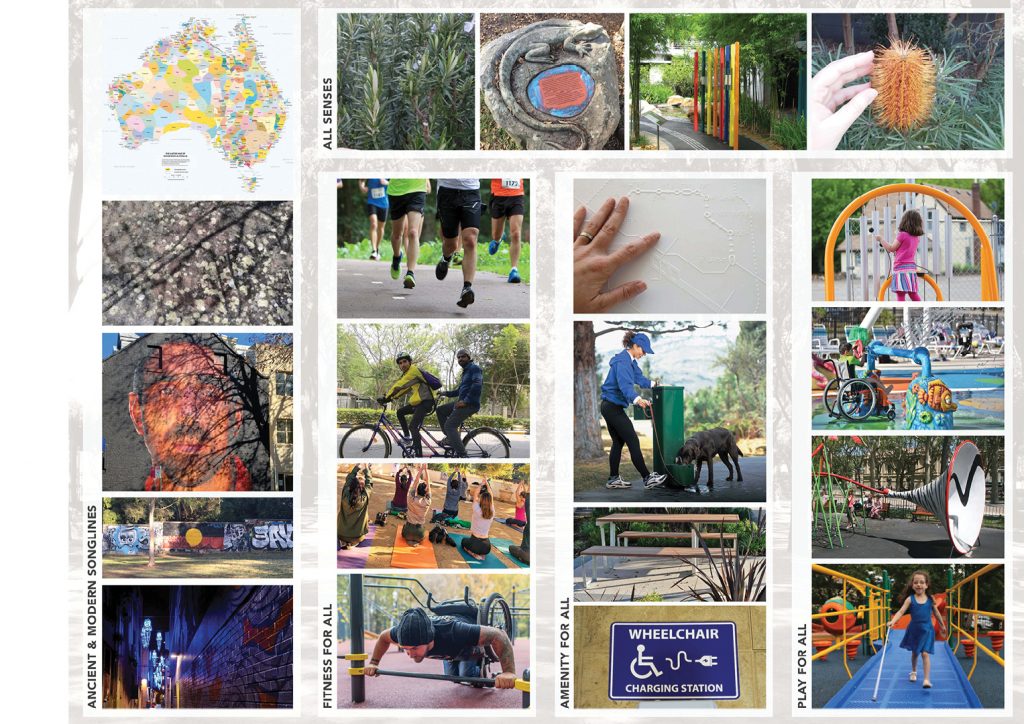What if this place belonged to me?
Imogen Howe, Dr Sheelagh Daniels-Mayes
Imagining and Creating public places that are inclusive for all
Diversity and inclusion strategies often fail to recognise that just because someone is included
doesn’t mean they feel they belong. Belonging is a fundamental human need, a powerful force that
goes beyond diversity or inclusion.
What if, when in public spaces: You know the First Nations lands you are on and their stories—past, present and emerging? That play is for all children? Picnicking and gathering is for everyone? Young and old enjoy together? You see yourself in the landscape? Gardens stimulate all the senses? Universal and inclusive design is so embedded that it is not obvious? Everyone can find their way? You can recharge your motorised wheelchair or fix your bike? You can chill, get fit and water your dog? There is the opportunity for markets and pop-up businesses?
Historically, discriminatory planning laws and regulations, and society’s understandings, resulted in excluding those who do not fit the normalised standards. The questions we pose are designed to stretch your imagination to create public spaces that invite all to use no matter your desire or need as reflected in our collage of gathered images of best practise. Public places of belonging are where people feel emotionally connected and safe, can learn, share ideas, participate in cultural experiences and meet new people. If such ideal public spaces existed, then the social and emotional well-being for all would be greatly improved. Going to a public space wouldn’t be a question of ‘Can we?’ but rather a statement of ‘Let’s Go!’
